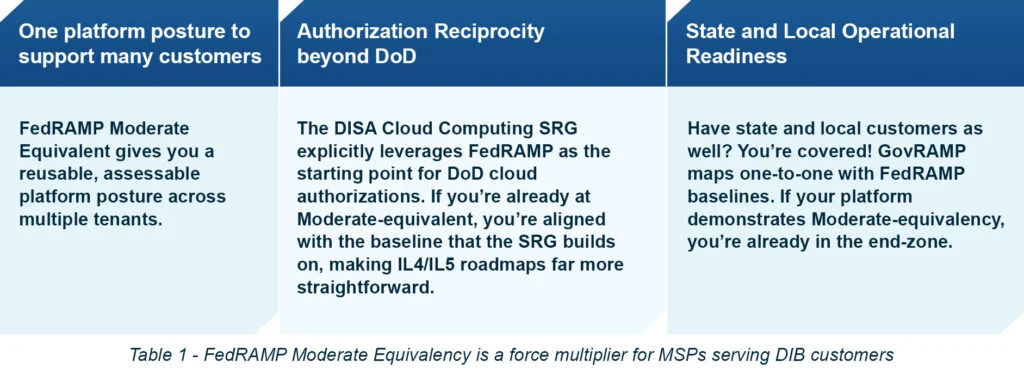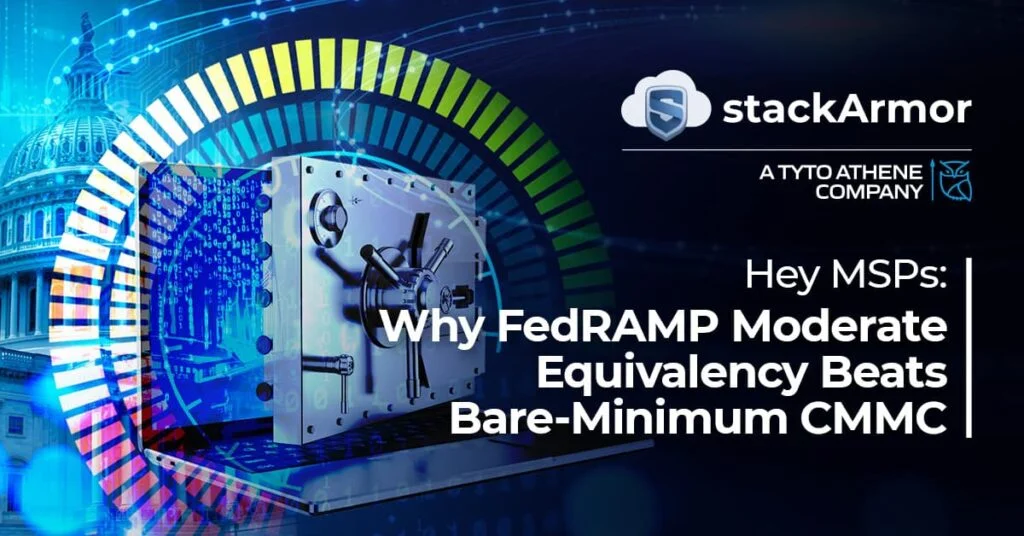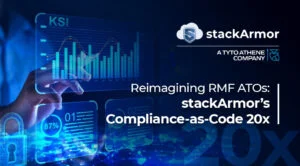Implementing CMMC? Think FedRAMP Moderate Equivalent Instead.
Hey MSPs…You Should Aim Higher Than Bare-Minimum CMMC. Go Full FedRAMP Moderate Equivalent. Be Brave!
The Pentagon finally dropped the other shoe. With the Defense Federal Acquisition Regulation Supplement (DFARS) amendment now posted for public inspection, CMMC requirements officially land in DoD contracts on November 10, 2025.
Simply put, the grace period is over! Procurement just turned into a cybersecurity filter. If you don’t meet the level specified in the RFP, go home and slap yo’ SSP – simple as that.
This is all great news for national security, but not-so-great if your business plan assumed you’d get to CMMC later or figured it didn’t apply to you. If you’re a Managed Service Provider (MSP) in the Defense Industrial Base (DIB), it definitely applies to you. The good news is that there’s a smarter move than sprinting to the nearest C3PAO for a one-and-done Level 2 certificate. In short, it’s time to consider building your stack and operating model around FedRAMP Moderate Equivalency, backed by stackArmor’s ThreatAlert® – a better option than doing the bare minimum to pass CMMC.
Why, you ask? Because CMMC is a driver’s license, whereas FedRAMP Moderate Equivalency is a worldwide passport.
Wait. What actually changed?
The DFARS amendment is the mechanism that puts CMMC stipulations into government contracts. Contracting officers will now include CMMC requirements in solicitations and awards, which means CMMC moves from a theoretical concept to a cold hard reality.
If you are experienced in the nuanced world of Controlled Unclassified Information (CUI) handling, or you help customers who are, you’re already living under DFARS 252.204-7012. That clause already mandates that when contractors use external cloud services, those services must meet FedRAMP Moderate or equivalent security. That’s not new, and it’s not optional.
In late 2023, the DoD issued the FedRAMP Equivalency memo that answered questions and settled arguments about what equivalency actually means.

In other words, it’s the full FedRAMP Moderate baseline, proven by a 3PAO, and as flawless as the Mona Lisa.
CMMC vs. FedRAMP Moderate Equivalent: different game, better prizes
CMMC Level 2 centers on implementing NIST 800-171 for protecting CUI. It’s not only essential but is now fully enforced within the contract language. However, 800-171 is not a cloud platform governance framework. FedRAMP Moderate on the other hand is built on NIST 800-53, which is far broader, deeper, and operationally richer.
With FedRAMP, it’s not just a question of whether controls exist, but an assurance that the platform services (e.g., identity management, logging/SIEM, boundary protection, FIPS-validated crypto, vulnerability management, etc.) are engineered and continuously validated throughout the authorization boundary.
If you’re an MSP serving multiple DIB clients, this difference matters – making equivalency a smart choice for a number of reasons.

CMMC lets you play the game, but FedRAMP Moderate Equivalency gives you Pete Rose-level odds of winning!
“But I thought CMMC is the requirement.”
Yep, you’re not wrong! The new DFARS is far from a suggestion, and makes CMMC requirements the minimum standard against which all contractors must adhere. But why stop at CMMC if you’re an MSP planning to scale?
A CMMC-only approach optimizes for one tenant’s scope at a time. An equivalency-first approach optimizes your Cloud Service Offering (CSO) so every tenant can leverage hardened, validated services. And here’s the kicker: DFARS 7012 already pushes you toward FedRAMP Moderate. Why not take the full ride up front and reap the rewards of Moderate Equivalency for years to come?
The ThreatAlert® path
So how do you operationalize the security-first, equivalency-ready approach without torching stacks of cash? Follow the 5 steps below for a guided journey from zero to MSP hero.

Figure 1 – ThreatAlert’s 5 step process to operationalize the security-first, equivalency-ready approach
MSP math: Why this wins commercially
It’s the old, would you rather have a cool million dollars or a penny that doubles every day for 30 days? question. Think of ThreatAlert as the answer that delivers compounding interest.
- Lower marginal cost per customer – Every new DIB tenant benefits from the sweet, sweet, hardened controls, telemetry, and evidence pipeline. Your unit economics improve because you’re not re-engineering per customer.
- Shorter time-to-revenue – Customers can onboard with confidence because your platform security is validated. That’s a procurement story contracting officers can accept without a novel-length due-diligence cycle. “We’re FedRAMP Moderate, nuff said.”
- Audit friction drops – stackArmor has supported hundreds of assessments with our automated platform and deliverables. We know what it takes to validate an environment and ThreatAlert® generates the artifacts and evidence that 3PAOs expect. No more wasting your valuable resources on snapping stale snapshots.
- Future-proofing – IL4/IL5? GovRAMP? Agency overlays? You’re already aligned to the common denominator everyone recognizes. You add overlays rather than re-authorizing from scratch. Got some overly pedantic agency requests…bring it.
The bottom line
CMMC’s DFARS integration means cybersecurity maturity is now a contractual precondition, not just a marketing promise. If you’re an MSP, you can either optimize for the smallest possible scope (check a CMMC box per customer and fight the same battles over and over), or you can build a platform that:
- Satisfies DFARS 7012.
- Proves FedRAMP Moderate Equivalency.
- Reuses that assurance across your entire book of business.
Equivalency keeps you busy. The reuse makes you fat stacks.
stackArmor built ThreatAlert® for exactly this moment: to make platform-level, query-driven, 3PAO-validated compliance normal, and most importantly, repeatable.
CMMC lets you start a conversation with your customer. FedRAMP Moderate Equivalency via ThreatAlert® lets you kick open your customer’s door, grab them by the shoulders, look them dead in the eye, and scream: Let’s Go!?
Copyright © 2025 stackArmor, Inc., a Tyto Athene Company. All rights reserved. All other trademarks not owned by stackArmor are the property of their respective owners, who may or may not be affiliated with, connected to, or sponsored by stackArmor. This document does not provide you with any legal rights to any intellectual property in any stackArmor product or solution.




